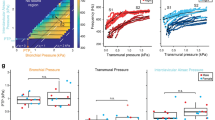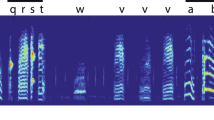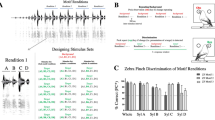Abstract
The complexity and dependence on learning of many bird sounds have suggested parallels between birdsong and human speech1–4, but the mechanisms by which each is produced have been supposed to differ markedly. In human speech, resonances of the vocal tract are thought to modulate in complex ways the sound produced by vibration of the vocal folds5–7. The current theory of birdsong production holds that all variation in sound quality arises from the primary sound-producing organ, the syrinx, and that resonances of the vocal tract play no part8,9. Here I present evidence, obtained from acoustic analyses of birdsongs recorded in a helium atmosphere, which contradicts this hypothesis. Not only does the songbird's vocal tract act as an acoustic filter, but its filter characteristics are actively coordinated with the output of the syrinx. Songbird and human phonation are thus more analogous than previously thought, in that both require coordination of an array of diverse motor systems.
This is a preview of subscription content, access via your institution
Access options
Subscribe to this journal
Receive 51 print issues and online access
$199.00 per year
only $3.90 per issue
Buy this article
- Purchase on Springer Link
- Instant access to full article PDF
Prices may be subject to local taxes which are calculated during checkout
Similar content being viewed by others
References
Marler, P. Am. Scient. 58, 669–673 (1970).
Marler, P. & Peters, S. in Perspectives on the Study of Speech (eds Eimas, P. D. & Miller, J. L.) 75–112 (Lawrence Erlbaum Ass., Hillsdale, New Jersey, 1981).
Nottebohm, F. Prog. Psychobiol. & physiol. Psychol. 9, 85–124 (1980).
Konishi, M. A. Rev. Neurosci. 8, 125–170 (1985).
Fant, G. Acoustic Theory of Speech Production (Mouton, The Hague, 1960).
Flanagan, J. L. Speech Analysis, Synthesis, and Perception, 2nd edn (Springer-Verlag, Berlin, 1972).
Lieberman, P. Speech Physiology and Acoustic Phonetics (Macmillan, New York, 1977).
Greenewalt, C. H. Bird Song: Acoustics and Physiology, 55–61 & 79–87 (Smithsonian, Washington, D.C., 1968).
Gaunt, A. S. & Gaunt, S. L. L. in Current Ornithology. Vol. 2 (ed. Johnston, R. F.) 213–246 (Plenum, New York, 1985).
Lord Rayleigh The Theory of Sound 2nd edn (Dover, New York, 1945).
Hardy, H. C., Telfair, D. & Pielemeier, W. H. J. acoust. Soc. Am. 13, 226–233 (1942).
Beranek, L. L. Acoustic Measurements, 37–49 (Wiley, New York, 1949).
Beil, R. G. J. acoust. Soc. Am. 34, 347–349 (1962).
Holywell, K. & Harvey, G. J. acoust. Soc. Am. 36, 210–211 (1964).
Martin, D. W. J. acoust. Soc. Am. 13, 305–308 (1942).
Benade, A. H. Fundamentals of Musical Acoustics, 391–429 (Oxford University Press, London, 1976).
Hersh, G. L. Thesis, Univ. California, Berkeley (1966).
Author information
Authors and Affiliations
Rights and permissions
About this article
Cite this article
Nowicki, S. Vocal tract resonances in oscine bird sound production: evidence from birdsongs in a helium atmosphere. Nature 325, 53–55 (1987). https://doi.org/10.1038/325053a0
Received:
Accepted:
Issue Date:
DOI: https://doi.org/10.1038/325053a0
This article is cited by
-
An ankylosaur larynx provides insights for bird-like vocalization in non-avian dinosaurs
Communications Biology (2023)
-
The vocal organ of hummingbirds shows convergence with songbirds
Scientific Reports (2020)
-
Raven food calls indicate sender’s age and sex
Frontiers in Zoology (2018)
-
Vocal variation in Chiroxiphia boliviana (Aves; Pipridae) along an Andean elevational gradient
Evolutionary Ecology (2018)
-
Calls during agonistic interactions vary with arousal and raise audience attention in ravens
Frontiers in Zoology (2017)
Comments
By submitting a comment you agree to abide by our Terms and Community Guidelines. If you find something abusive or that does not comply with our terms or guidelines please flag it as inappropriate.



